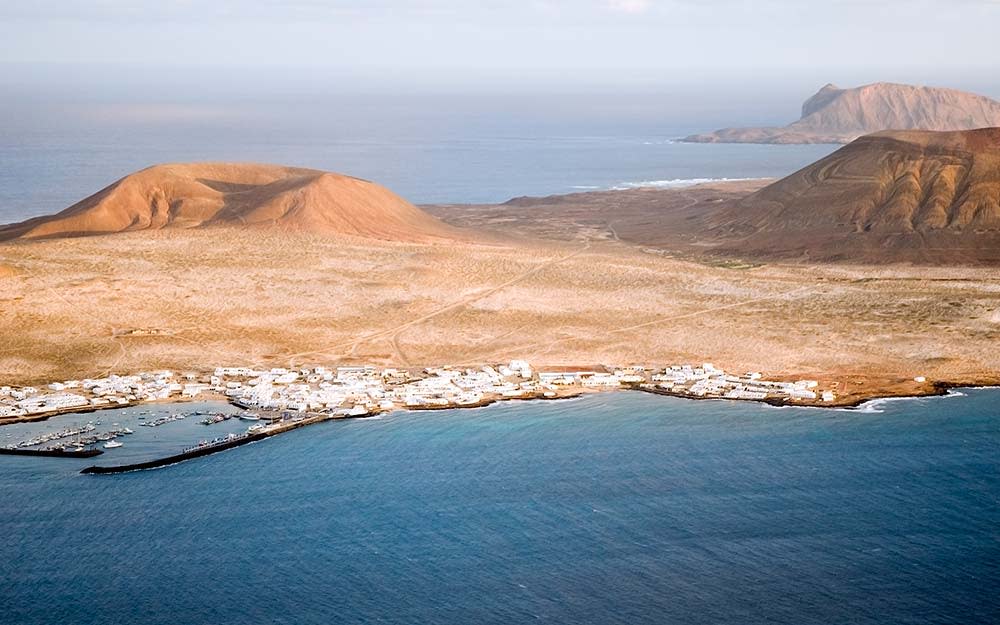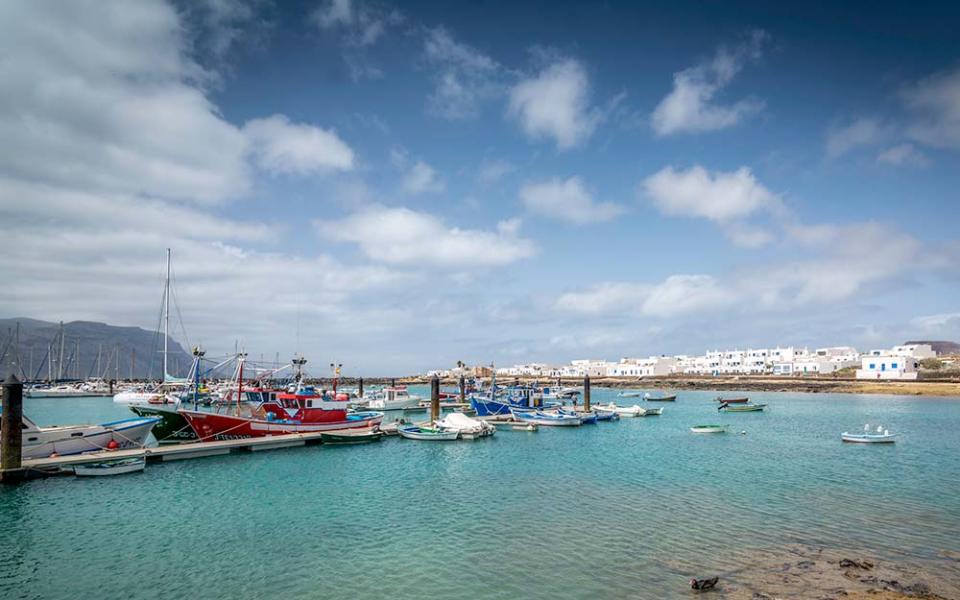The remote, eerily beautiful Canary Island you probably didn't know about

Glimpsed from Lanzarote’s towering Famara cliffs, the isolated 17-sq-mile island of La Graciosa looks entirely uninhabited, until you spot a cluster of whitewashed houses hugging a tiny harbour. This eerily beautiful volcanic world of low-lying lava peaks and miles of powdery golden-white Atlantic beaches officially became the eighth Canary Island in 2018, but it’s still one of Spain’s most blissfully remote and secluded pockets.
La Graciosa is the only populated spot in the Unesco-protected Chinijo Archipelago, whose five islands just off northern Lanzarote have been a mostly off-limits parque natural since 1986. All ‘roads’ here turn out to be sandy paths, so there are hardly any cars, and those wildly beautiful, all-natural beaches are reached only by walking or cycling.
The island has so far emerged from the Covid-19 pandemic with just a couple of cases, though during the Spanish lockdown residents here lived under the same strict regulations as everyone else. Lanzarote, meanwhile, has had around 1,200 cases (with nine deaths) to date. This week, both the UK and Germany added the Canary Islands to their lists of safe travel corridors, with bookings surging amid hopes for a busy winter season across the archipelago.
Many of the 750 resident gracioseros work in tourism and, like so many others in Spain, businesses here have felt the sudden absence of foreign visitors this year, though travellers from the neighbouring Canaries and mainland Spain have been enjoying the island since domestic travel resumed in July. Some residents feel vulnerable as tourism returns and there are strict safety protocols in place, including temperature checks for all passengers boarding the ferries over from Órzola in northern Lanzarote. The Spanish government and the Canary and Balearic Islands’ authorities have also proposed plans to introduce Covid-19 testing before arrival on the islands and again 48 hours before departure, for travellers from countries with a cumulative incidence of over 50 per 100,000.
This visit, back in July, I’m aboard Líneas Romero’s first catamaran day trip from Lanzarote since March. The team continued running an essential twice-daily ferry to and from Lanzarote throughout the lockdown, and has been kept busy by Spanish summer visitors since relaunching. Impressive new safety measures on board include socially distanced seats, hand sanitiser everywhere, protective screens for staff, and a one-way route for moving around. I hop on in pretty Órzola, and we’re off.

Manager Luis Padrón is keen for the trip to be both fabulous fun and as safe as possible, and says “Isla Graciosa is almost all beach, so it’s easy to keep social distancing”. Relaxing with a drink and tortilla pincho in hand, as we sail between Lanzarote’s hike-in-only Playa del Risco and La Graciosa’s parched moonscape, it seems we’re finding a good balance.
La Graciosa feels so distant from the rest of the world that it’s surreal to see visitors and islanders wandering around the small low-key ‘capital’ Caleta de Sebo in face masks (which are mandatory everywhere in public in Spain). The taxis (four-wheel drive) are waiting, bike-hire shops spill on to the sandy streets, and people sit out on restaurant terraces. The village’s nautical-themed 20th-century church now has a one-way system, hand gel at the door and a maximum capacity of eight. Over in the bakery, it’s hand sanitiser and a one-in, one-out policy, and even at the Museo Chinijo, which claims to be the world’s smallest museum, an arrowed itinerary has arrived.
Beyond Caleta de Sebo, La Graciosa’s only other settlement is Casas de Pedro Barba, a huddle of holiday homes towards the island’s northeast – some owned by people from Caleta de Sebo. Most visitors explore on quick day trips from Órzola, but to really fall into the mellow La Graciosa rhythm, stay a few nights.
Spend the days wandering between the beaches (Playa de las Conchas is a favourite), soaking up the sunsets, having long seafood lunches and breezy picnics, and maybe dabbling in diving, kayaking or kitesurfing, or hiking up the island’s tallest ‘peak’, 266m-high (873ft) Agujas Grandes. For accommodation, it’s a choice between self-catering apartments and houses and a couple of guesthouses, including long-running Pensión Enriqueta, with simple, cheerful rooms. The spectacularly positioned campsite overlooking Playa del Salado remains closed until at least December 2020.

Carmen Portella Ernest, director of Eco Insider, runs sensitive, small-group boat trips to see (but not land on) the far-flung uninhabited Chinijo islets of Montaña Clara and Alegranza off La Graciosa, around which you might spot turtles, dolphins, whales and shearwaters, as well as the Atlantic’s only colony of Eleonora’s falcon. She is also the founder of the Lanzarote-based Desert Watch conservation project, which you can join for volunteer days.
“La Graciosa is a small paradise” she says, but also points out that it’s facing growing challenges to protect its pristine natural environment while also welcoming back tourism (in a typical year around 250,000 visitors drop in) and encourages travellers to stop by the natural park office in Caleta de Sebo for maps and official advice on how to explore responsibly.
From Caleta de Sebo, it’s a hot and unbelievably scenic 30-minute walk to the honey-coloured sandy curve of Playa Francesa, where I brave the chilled Atlantic for my first ocean swim this year. The Montaña Amarilla, a volcanic swirl of ochre and yellow on southernmost La Graciosa, looms behind; the rocky turquoise shallows fold into deep marine blues offshore; and the Famara crags sweep downhill across the waves. What a privilege to be here.

 Yahoo News
Yahoo News 
